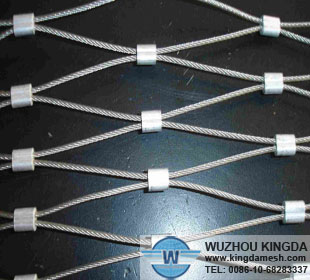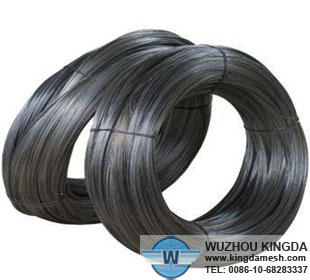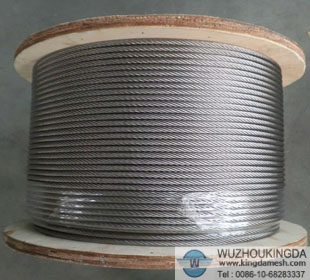Properties of Stainless 6X19 Stainless Wire Rope
Properties of Stainless 6X19 Stainless Wire Rope
When you consider the properties of 6-by-19 stainless steel wire rope, you should be aware of what the 6-by-19 designation means and how flexible it is in comparison to other types of wire rope. You should also be aware of its strength in relation to other types of wire rope and the advantage that Stainless Wire Rope offers in the marine environment.
Identification of Stainless Wire Rope
Wire rope is identified by the number of strands and number of wires per strand. In the case of 6-by-19 wire rope, that's six strands, each made up of 19 individual wires. In most wire rope, both the wires and strands are pre-formed, meaning they are twisted into their corkscrew-like form before the rope is assembled.
Flexibility
Smaller wires and more wires means more flexibility, the same way that an earthworm's many segments make it more flexible than the roach with its three segments. Flexibility is a wonderful thing in wire rope, but there's a downside as well. More wires mean more seams to allow abrading materials, such as sand, to enter the rope and damage the wires. This, in turn, reduces the rope's strength and increases the likelihood the rope will break at the wrong time. A wire rope of fewer and larger wires is more abrasion resistant, but less flexible.
Strength
Size matters when it comes to the strength of Stainless Wire Rope and the size is the diameter, not the number of wires or strands. A 6-by-19 rope is as strong as a 6-by-32 Stainless Wire Rope, as long as both are the same size. The size of Stainless Wire Rope is its largest diameter. Six-strand wire rope is hexagonal in shape. This means the largest diameter coincides with a line drawn through the center of two strands directly opposite each other.
Corrosion Resistance
Stainless steel is more corrosion resistant than other types of steel, making it more suited for the marine environment. When assaulted by the elements, its components, which are chromium, iron, carbon, manganese, nickel and molybdenum, react to create a stable oxide that protects the integrity of the steel. Because the oxide is only a few atoms thick, the familiar, shiny appearance is maintained.




